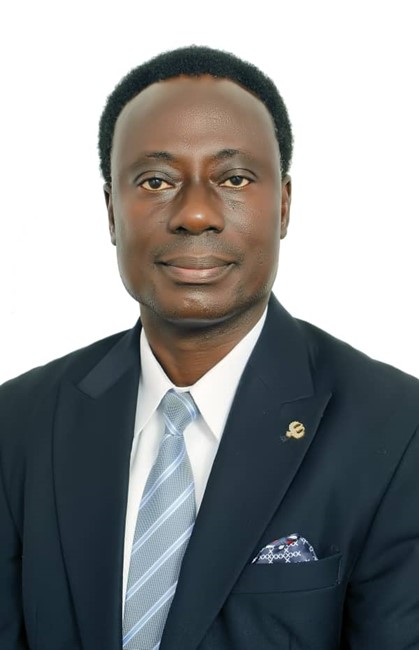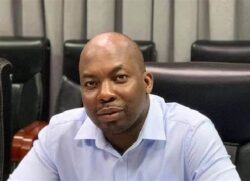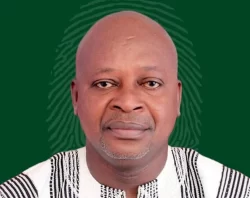By Daniel NKRUMAH
Several seminars and conferences have extensively discussed the issue of Executive Pitfalls. Development Dimensions International (DDI) research on ‘Why Executive Fail- and How to Prevent It’, ‘Lean Six Sigma for Executive Leadership’ program by the Pyzdek Institute, and the Ghana CEO Summit have all highlighted concerns about leadership failure and proposed actionable solutions.
In simple terms, an Executive Pitfall refers to administrative and operational blind spots that undermine a leader’s effectiveness in executing their mandate, for example, overstepping administrative protocols i.e. bypassing approval processes. According to Investopedia’s ‘Chief Executive Offcer (CEO) is the highest-ranking executive in a company whose primary responsibilities usually include making major decisions and managing the overall operations and resources of a company’. It can be private or public organizations, non-profit organizations and even some government organizations.
In the non-profit and government sectors, CEOs typically aim at achieving outcomes related to the organization’s mandate, such as providing infrastructural facilities, reducing poverty, improving service delivery, enhancing security and safety, etc.
District Chief Executive as CEO
The Local Governance Act. 2016 (Act 936) provides for the position of District Chief Executive (DCE), a generic name for Metropolitan, Municipal and District Chief Executives in Ghana.
Among the functions expected of a DCE is to exercise day-to-day performance of the executive and administrative functions of the District Assembly. The District Chief Executive is expected to provide strategic leadership and overall direction for the Assembly within the guidelines set by the governing body-the General Assembly.
In this ground-breaking piece, I have provided crucial insights, as well as clues to guide the DCEs to have a good start and subsequently avoid executive pitfall.
First John chapter two verse one says: “My dear children, I am writing this to you so that you may not sin … “In much the same way I write, My Dear Honourable Metropolitan, Municipal And District Chief Executives (MMDCEs), I am writing this to you so that you may avoid executive pitfall”. Remember an adage that a tree ‘ananse’ (spider) has eaten and died, ‘ntekuma’ should not sit under it dozing.
The expectations of many are that the change of government will bring about a significant transformation in their lives. The immediate impact of a change in government is evident when District Assemblies rise to the occasion. This is largely achieved through the quality leadership of District Chief Executives. It is, therefore, logical to conclude that the success of the Assemblies reflects the success of the central government.
Challenges of the new position
Invariably, people who take up new appointments wonder how to function effectively in their new role. The reason is simple; the early stages are periods of acute vulnerability because one may not have the grapes of the established working relationships and detail understanding of the job. The new Chief Executive may not be familiar with the legal nuances of the assemblies, organizational structure, systems and procedures and other informal communication channels and networks.
The newly appointed District Chief Executive’s frustration becomes apparent when confronted with significant resource constraints. The inability to get departments functioning effectively- due to inadequate logistics and limited funding turns the effort to deliver essential services into a daunting task.
Learning curve and needs assessment
Few new leaders take time to think systematically about their learning needs but they are critical for future success. It is imperative for DCEs to take deliberate steps to learn the systems, people, and culture of the Assemblies. The success of any chief executive depends largely on the support from the staff. Indeed, every DCE relies on the total commitment of their staff to function effectively. Gaining their support demands the ability and skill to build and sustain a productive working relationship.
DCEs may use management meetings, departmental meetings and staff durbars as tools to engage more closely with staff and gain deeper insight into their work. Before implementing any major changes- however necessary they may appear- DCEs must first take the time to observe and understand the existing systems and dynamics. Only then can they implement changes that are both strategic and sustainable.
Managing perceptions and fostering constructive leadership as a new DCE
Newly appointed District Chief Executives (DCEs) may hold certain perceptions—either positive or negative—upon assuming office. However, it is prudent for a Chief Executive to refrain from making negative comments about the current state or past achievements of the organization. Instead, a more constructive and modest approach is to ask, ‘How did we get to this point?’ This question encourages reflection and opens the door to a proper diagnostic process involving the management team. Through collaborative analysis and shared understanding, leaders can co-create practical solutions that lead to improved outcomes.
Otherwise, you risk tearing down fences without knowing why they were put up. Leaders who fail to take time to understand the organization are likely to fall into what is known as the ‘action imperative’- the tendency to make premature decisions that can undermine their credibility. This, in turn, may cause staff to withhold important information, ultimately leading to more poor decisions.
Governance systems in the District Assembly
For better appreciation of the task ahead of DCEs let us liken the governance system in the District Assemblies to the private or quasi government institutions such as Ghana Commercial Bank. The owners of the Assembly are the residents in the district. The Assembly Members serve as the Board of Directors; the Presiding Member functions as the Board Chair; the Coordinating Director acts as the Company Secretary and the DCE is the Chief Executive Officer. The Executive Committee is the cabinet of the Assembly. The DCE, no doubt, leads the Assembly but derives her authority from the Assembly Members (Board of Directors) who are directly accountable to the people.
Translating intentions to projects and programmes
It is pertinent to note that getting the intentions, plans, and programmes of Chief Executive carried out may not be as easy as one may think. Why? Because there are laid-down procedures required to implement any desired project within District Assembly system. Among the processes include:
- The project must first be in the Medium Term Development Plan (MTDP)
- It must be selected to be included in the annual action plan of the Assembly and must be approved by the general Assembly.
- Items in the action plan must be duly budgeted for in the Assembly’s Composite Budget.
- The same must have reflection in the procurement plan of the assembly.
Based on the aforementioned, the newly appointed DCE has limited opportunity to introduce her own projects into the Assembly’s scheme of work for 2025. The smart thing to do would be to rally behind the team of technocrats to quickly implement what is already on the drawing board, as an initial step towards winning the hearts of the electorate. The new DCE may have the opportunity to introduce her own plans and programs in the subsequent years’ budget. However, there is a caveat: she must play a critical role in the preparation of the ongoing 2026-2029 Medium Term Development Plan (MTDP).
The DCE can meet the expectations of the people only when their development aspirations are addressed. The district planning teams are currently engaging the community members and other stakeholders to solicit their inputs into the preparation of the plan. Therefore, DCE can formally contribute to the plan by highlighting the issues and concerns that emerge from their engagements with the people during the ongoing familiarization tour in their respective districts. Without following these processes, it will be difficult for DCEs to have their intentions and plans see the light of the day, no matter how good they are.
Recommendations
- As much as possible, DCEs should avoid coming in with ready-made answers on how to tackle the Assembly’s challenges. Instead, the Chief Executive should focus on building consensus with the Assembly’s management and staff, who possess a wealth of knowledge, skills and experience to help craft sustainable solutions to the numerous problems facing the Assemblies.
- The Chief Executive should strictly observe all approval processes to ensure that things are done the right way. They should also avoid as much as possible the usurpation of the powers of Assembly Members by taking actions without their express consent.
- The DCEs should avoid undertaking any project that falls outside the Annual Action Plan (AAP), Composite Budget and Procurement Plan, as the Ghana Integrated Financial Management System (GIFMIS) will not permit payment for such activities.
- DCEs are advised to use the existing administrative structures to executive the Assembly’s mandate in order to avoid unnecessary administrative conflict. The Chief Executive should rely on the Coordinating Director and other technocrats for guidance on how to use these structures effectively to achieve better results.
- DCEs should avoid becoming a prisoner of events. They must recognize that, very soon, they will be inundated with pressing demands. However, they should remain focused and stick to their plan, while handling daily issues as they arise. Without a clear action plan, the Chief Executive risks becoming a prisoner of events.
- Finally, the Coordinating Directors and staff should remain loyal and resolute and execute their duties expeditiously and professionally to support the DCEs in achieving their objectives.
It is obvious that many District Chief Executives assume office with genuine motives, deep passion, and a strong commitment to advancing development within their communities and improving the quality of life for their people. However, if they neglect early signs of executive pitfalls, they may eventually leave the office with regret.
>>>The writer is Municipal Coordinating Director, La Dade Kotopon Municipal Assembly (LADMA). He is a member of the Institute of Directors (IoD), Chartered Institute of Administrators and Management Consultants (CIAMC-Gh), and Local Government Practitioners Association










